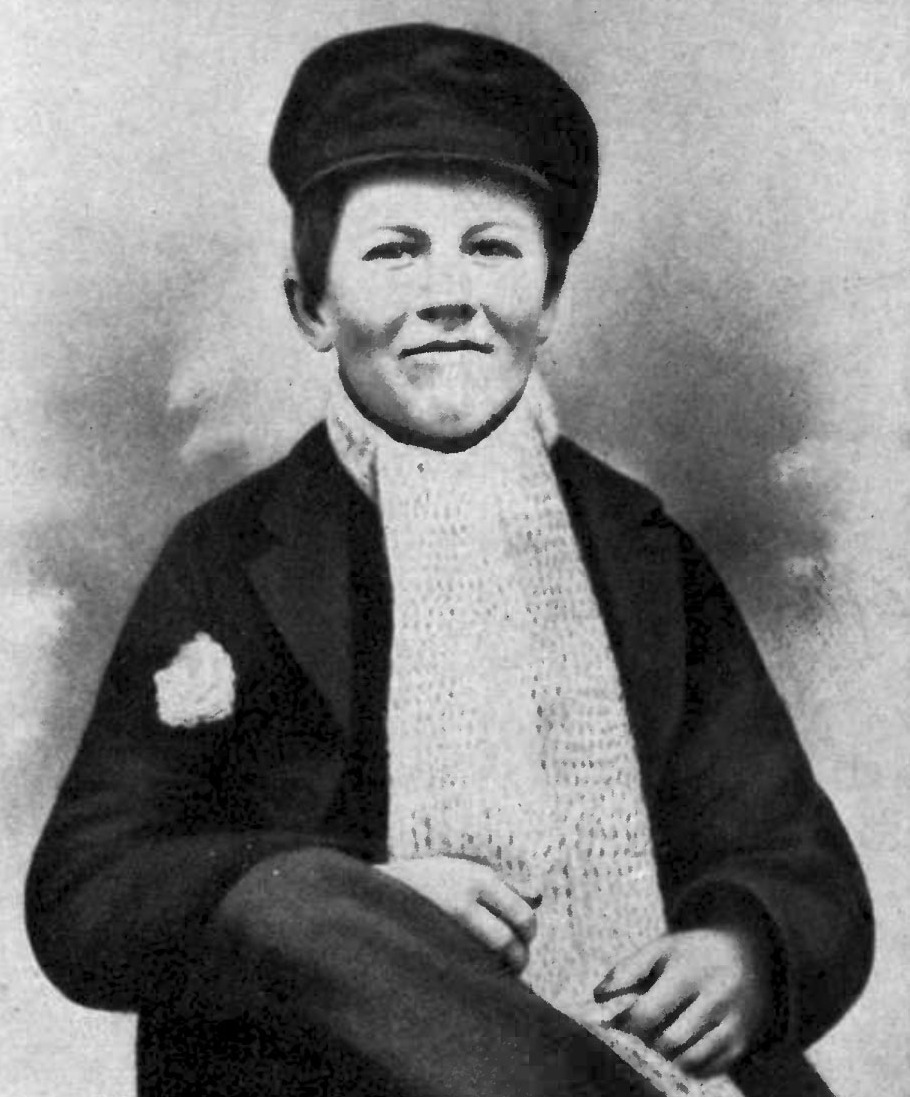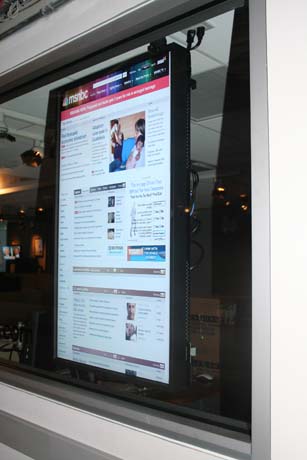|
Crowd Farm
The Crowd Farm is a project conceived by MIT students Tad Juscyzk and James Graham and announced at the Holcim Forum 2007 awards ceremony. The goal of the project is to convert the energy of human movement in urban settings to energy suitable for consumer use. The conception began for Graham experiencing the 2003 New York City blackout and Juscyzk attending Boston's World Cup celebration in City Hall Plaza, as well by an "ingenious little device by Thomas Edison. When visitors came to his house, they passed through a turnstile that pumped water into his holding tank," says Graham. Examples of locations generating large quantities of human movement are commuters in a train station or fans at a concert. Concept The idea of a Crowd Farm would work like this: Boston's South Station railway terminal would house a responsive sub-flooring system made up of blocks that depress slightly under the force of human steps would be installed beneath the station's main lobby. The slippage of ... [...More Info...] [...Related Items...] OR: [Wikipedia] [Google] [Baidu] |
City Hall Plaza (Boston)
City Hall Plaza in Boston, Massachusetts, is a large, open, public space in the Government Center, Boston, Government Center area of the city. The architectural firm Kallmann McKinnell & Knowles designed the plaza in 1962 to accompany Boston's new Boston City Hall, City Hall building. The multi-level, irregularly shaped plaza consists of red brick and concrete. The Government Center (MBTA station), Government Center MBTA station is located beneath the plaza; its entrance is at the southwest corner of the plaza. History The siting of the plaza, the City Hall, and other structures in Government Center was the responsibility of I. M. Pei, commissioned by Edward J. Logue, then development administrator of the Boston Redevelopment Authority. The plaza and City Hall were constructed between 1963 and 1968, on the former site of Scollay Square, which despite its vibrancy and historical interest, was considered a seedy area by some. Other streets removed to make way for the plaza incl ... [...More Info...] [...Related Items...] OR: [Wikipedia] [Google] [Baidu] |
Thomas Edison
Thomas Alva Edison (February11, 1847October18, 1931) was an American inventor and businessman. He developed many devices in fields such as electric power generation, mass communication, sound recording, and motion pictures. These inventions, which include the phonograph, the motion picture camera, and early versions of the electric Incandescent light bulb, light bulb, have had a widespread impact on the modern industrial society, industrialized world. He was one of the first inventors to apply the principles of organized science and teamwork to the process of invention, working with many researchers and employees. He established the first industrial research laboratory. Edison was raised in the American Midwest. Early in his career he worked as a telegraph operator, which inspired some of his earliest inventions. In 1876, he established his first laboratory facility in Menlo Park, New Jersey, where many of his early inventions were developed. He later established a botanical ... [...More Info...] [...Related Items...] OR: [Wikipedia] [Google] [Baidu] |
Dynamo
"Dynamo Electric Machine" (end view, partly section, ) A dynamo is an electrical generator that creates direct current using a commutator. Dynamos employed electromagnets for self-starting by using residual magnetic field left in the iron cores of electromagnets (i.e. field coils). If dynamo were never run before it was usual to use a separate battery to excite or ''flash the field'' of the electromagnets to enable self-starting. Dynamos were the first practical electrical generators capable of delivering power for industry, and the foundation upon which many other later electric-power conversion devices were based, including the electric motor, the alternating-current alternator, and the rotary converter. Today, the simpler and more reliable alternator dominates large scale power generation, for efficiency, reliability and cost reasons. A dynamo has the disadvantages of a mechanical commutator. Also, converting alternating to direct current using rectifiers (such as va ... [...More Info...] [...Related Items...] OR: [Wikipedia] [Google] [Baidu] |
Flywheel
A flywheel is a mechanical device that uses the conservation of angular momentum to store rotational energy, a form of kinetic energy proportional to the product of its moment of inertia and the square of its rotational speed. In particular, assuming the flywheel's moment of inertia is constant (i.e., a flywheel with fixed mass and second moment of area revolving about some fixed axis) then the stored (rotational) energy is directly associated with the square of its rotational speed. Since a flywheel serves to store mechanical energy for later use, it is natural to consider it as a kinetic energy analogue of an electrical Inductor. Once suitably abstracted, this shared principle of energy storage is described in the generalized concept of an accumulator. As with other types of accumulators, a flywheel inherently smooths sufficiently small deviations in the power output of a system, thereby effectively playing the role of a low-pass filter with respect to the mechanical veloc ... [...More Info...] [...Related Items...] OR: [Wikipedia] [Google] [Baidu] |
The Register
''The Register'' (often also called El Reg) is a British Technology journalism, technology news website co-founded in 1994 by Mike Magee (journalist), Mike Magee and John Lettice. The online newspaper's Nameplate_(publishing), masthead Logo, sublogo is "''Biting the hand that feeds IT''." The publication's primary focus is information technology news and opinions. Situation Publishing Ltd is the site's publisher. Drew Cullen is an owner and Linus Birtles is the managing director. Andrew Orlowski was the executive editor before leaving the website in May 2019. History ''The Register'' was founded in London as an email newsletter called ''Chip Connection''. In 1998 ''The Register'' became a daily online news source. Magee left in 2001 to start competing publications ''The Inquirer'', and later the ''IT Examiner'' and ''TechEye''. In 2002, ''The Register'' expanded to have a presence in London and San Francisco, creating ''The Register USA'' at theregus.com through a joint ventu ... [...More Info...] [...Related Items...] OR: [Wikipedia] [Google] [Baidu] |
LiveScience
Live Science is a science news website. The publication features stories on a wide range of topics, including space, animals, health, archaeology, human behavior, and planet Earth. It also includes a reference section with links to other websites. Its stated mission is to inform and entertain readers about science and the world around them.{{r, mission History Live Science was originally made in 2004. It was acquired by ediaNetwork, later called Purch, in 2009.{{r, purch Purch consumer brands (including Live Science) were acquired by Future in 2018. Reception In 2011, the ''Columbia Journalism Review The ''Columbia Journalism Review'' (''CJR'') is a biannual magazine for professional journalists that has been published by the Columbia University Graduate School of Journalism since 1961. Its original purpose was "to assess the performance ...''{{'s "News Startups Guide" called Live Science "a purebred Web animal, primarily featuring one-off stories and photo galler ... [...More Info...] [...Related Items...] OR: [Wikipedia] [Google] [Baidu] |
Science Daily
''ScienceDaily'' is an American website launched in 1995 that aggregates press releases and publishes lightly edited press releases (a practice called churnalism) about science, similar to Phys.org and EurekAlert!. History The site was founded by married couple Dan and Michele Hogan in 1995; Dan Hogan formerly worked in the public affairs department of Jackson Laboratory writing press releases. The site makes money from selling advertisements. the site said that it had grown "from a two-person operation to a full-fledged news business with worldwide contributors". At the time, it was run out of the Hogans' home, had no reporters, and only reprinted press releases. In 2012, Quantcast ranked it at 614 with 2.6 million U.S. visitors. Sections As of August 2023, ''ScienceDaily'' mainly has five sections, Health, Tech, Enviro, Society, and Quirky, the last of which includes the top news. References External links * Alexa - ScienceDaily��{{Webarchive, url=https://web.a ... [...More Info...] [...Related Items...] OR: [Wikipedia] [Google] [Baidu] |
Good Worldwide
GOOD Worldwide Inc. is a United States–based media company that reports on businesses and non-profits. GOOD produces a website, a quarterly magazine, online videos, and events. The company was founded in 2006 and has offices in Los Angeles, New York, and Seattle. Brands GOOD GOOD is a media outlet and produces the online news site www.good.is. Upworthy Upworthy is a media brand that focuses on publishing positive stories. It was started in March 2012 by Eli Pariser and Peter Koechley, and was acquired by GOOD Worldwide in 2017. Originally, Upworthy focused on featuring existing content found elsewhere on the internet, but it later shifted to sharing more original content. In 2021 it was ranked as one of the Top 100 Social Brands, and in 2024 it reached over 100 million people per month. History GOOD was co-founded in 2006 by Ben Goldhirsh (son of '' Inc. magazine'' founder Bernie Goldhirsh), Max Schorr, and Casey Caplowe. Eschewing experienced editors, he hired ... [...More Info...] [...Related Items...] OR: [Wikipedia] [Google] [Baidu] |
NBCNews
NBCNews.com, formerly known as msnbc.com, is a news website owned and operated by NBCUniversal as the online arm of NBC News. Along with original and wire reporting, it features content from NBC shows such as '' Today'', ''NBC Nightly News'', ''Meet The Press'', and '' Dateline NBC'', the MSNBC cable channel, and partners such as ''The New York Times''. The site was founded in 1996 as a 50-50 venture between NBC and Microsoft at the same time as the two companies formed a separate joint venture for the cable news network MSNBC. Although they shared the same name, msnbc.com and MSNBC maintained separate corporate structures and news operations, with msnbc.com headquartered on the West Coast on the Microsoft campus in Redmond, Washington, and MSNBC in the NBC headquarters in New York. Microsoft divested its stake in the MSNBC channel in 2005, and divested its stake in msnbc.com in July 2012. History The site was established as msnbc.com in 1996 at the same time as the MSNBC cab ... [...More Info...] [...Related Items...] OR: [Wikipedia] [Google] [Baidu] |
Kinetic Energy
In physics, the kinetic energy of an object is the form of energy that it possesses due to its motion. In classical mechanics, the kinetic energy of a non-rotating object of mass ''m'' traveling at a speed ''v'' is \fracmv^2.Resnick, Robert and Halliday, David (1960) ''Physics'', Section 7-5, Wiley International Edition The kinetic energy of an object is equal to the work, or force ( F) in the direction of motion times its displacement ( s), needed to accelerate the object from rest to its given speed. The same amount of work is done by the object when decelerating from its current speed to a state of rest. The SI unit of energy is the joule, while the English unit of energy is the foot-pound. In relativistic mechanics, \fracmv^2 is a good approximation of kinetic energy only when ''v'' is much less than the speed of light. History and etymology The adjective ''kinetic'' has its roots in the Greek word κίνησις ''kinesis'', meaning "motion". The dichoto ... [...More Info...] [...Related Items...] OR: [Wikipedia] [Google] [Baidu] |




